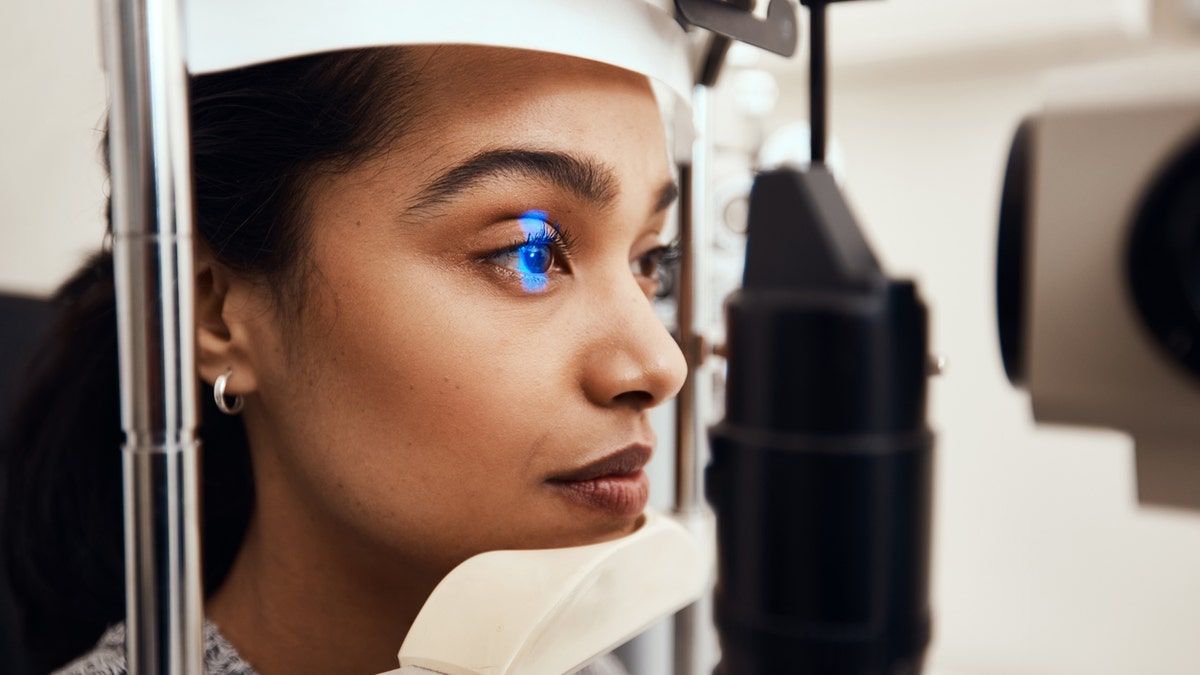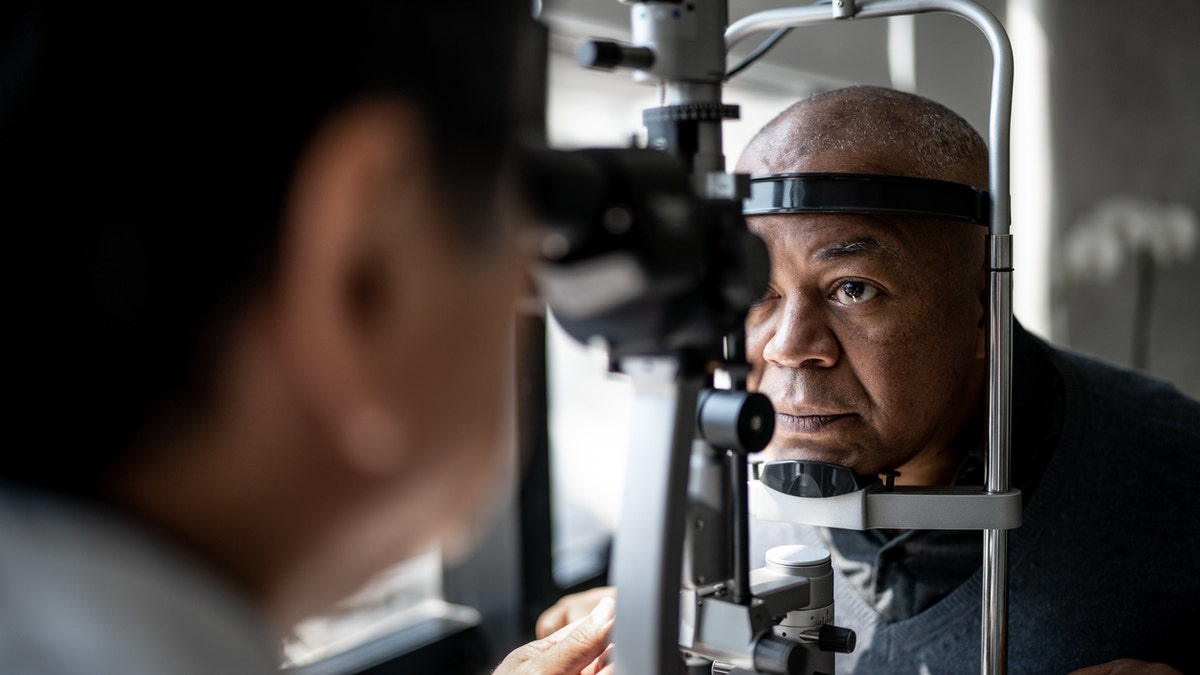[ad_1]
To kick off Glaucoma Awareness Month in January, experts are setting the record straight on some common myths about what the American Academy of Ophthalmology (AAO) calls the “silent thief of sight.”
Approximately three million Americans have glaucoma.
Yet only half of them are aware they have the potentially blinding disease, according to the Centers for Disease Control and Prevention (CDC).
WHY ARE SOME PEOPLE COLOR BLIND? HERE’S THE SCIENCE BEHIND IT, INCLUDING HOW TO RECOGNIZE SYMPTOMS
Here’s the truth behind some common myths, according to glaucoma experts.
Myth No. 1: People can tell when they’re developing glaucoma
Glaucoma has no symptoms in its early stages, the AAO shared with Fox News Digital in a statement.
The disorder, which is caused by a group of ocular conditions that damage the optic nerve, is the second leading cause of blindness worldwide, per the CDC.

Approximately three million Americans have glaucoma, but only half of them are aware that they have the potentially blinding disease. (iStock)
“The optic nerve is made of more than a million tiny nerve fibers,” the AAO stated.
“It is like an electric cable made up of many small wires.”
AS EYE DROP RECALLS CONTINUE, HERE’S WHAT YOU NEED TO KNOW TO PROTECT YOUR VISION
When the nerve fibers die, blind spots develop — but it’s often not until later in the course of the disease that patients develop symptoms.
When all the nerve fibers die, the patient loses his or her vision to glaucoma — and is not able to see again.
Myth No. 2: Young people can’t get glaucoma
Anyone can get glaucoma, but the disease’s prevalence increases with age.
“Glaucoma is a leading cause of blindness for people over 60 years old,” the AAO noted.

African Americans are not only six times more likely to get glaucoma than Caucasian Americans, but they are also more likely to develop the disease earlier in life, according to the CDC. (iStock)
Even babies can get glaucoma, with an estimated one in 10,000 infants born with the condition, according to The Glaucoma Foundation’s website.
Myth No. 3: People can’t get glaucoma if there is no family history
If someone in the family has had glaucoma, everyone else, including children, should be tested for the eye disease, The Glaucoma Foundation advises.
Approximately 90% of blindness due to glaucoma could be prevented with early detection, diagnosis and prompt treatment.
But people without a family history are still at risk for the disease.
Some of the highest-risk groups include those who: are age 40 or older; have had a previous eye injury; are farsighted or nearsighted; have used steroids long-term; or have diabetes, migraines or high blood pressure, the AAO added.
Myth No. 4: Ethnicity is not a risk factor
African Americans are not only six times more likely to get glaucoma than Caucasian Americans, but they are also more likely to develop the disease earlier in life, according to the CDC.

Caused by a group of ocular conditions that damage the optic nerve, glaucoma is the second leading cause of blindness worldwide. (iStock)
Asian Americans are also at high risk for developing glaucoma.
And recent research has found that the condition is much more common in Hispanics than previously thought.
Myth No. 5: Glaucoma always means having increased pressure in the eye
There are many types of glaucoma, but the one thing they all have in common is damage to the optic nerve.
Not all of them necessarily involve elevated eye pressure, otherwise known as intraocular eye pressure (IOP), although many of them do.
HERE’S WHAT YOU NEED TO KNOW ABOUT VISION LOSS AND HOW TO SHOW SUPPORT FOR THE VISUALLY IMPAIRED
The eye constantly makes aqueous humor (clear, water-like fluid), and as new aqueous flows in, the same amount should drain out, the AAO noted.
“In a healthy eye, fluid leaves the eye through the drainage angle, keeping pressure stable,” the academy said in a statement.
“But if the drainage angle is not working properly, fluid builds up.”

The eye constantly makes aqueous humor (clear, water-like fluid), so as new aqueous flows in, the same amount should drain out, the AAO noted. (iStock)
When the pressure becomes too intense, the sensitive organ gives at its weakest point where the optic nerve leaves the eye, according to The Glaucoma Foundation.
While most types of glaucoma create increased pressure due to the backup of fluid, not all cases are associated with IOP.
EYE PROBLEMS FIXED WITH CASTOR OIL? BEWARE THE VIRAL TIKTOK TREND, DOCTORS WARN: ‘NOT A CURRENT TREATMENT’
“Glaucoma specialists believe that some forms of glaucoma are strongly related to vascular changes and impaired ‘nutrition’ (poor blood flow) to the optic nerve,” The Glaucoma Foundation noted in a statement.
Myth No. 6: Only people with high blood pressure can have elevated eye pressure
People with high blood pressure do not necessarily have elevated eye pressures — and there are people with elevated eye pressures who do not have high blood pressure, experts say.
Those who do have elevated eye pressures should be monitored to make sure they don’t develop glaucoma.
People with elevated eye pressures may have no signs of eye damage, the AAO noted.

Getting regular eye exams can help your ophthalmologist detect the beginnings of the disease before vision loss occurs, the AAO noted. (iStock)
“These patients are considered ‘glaucoma suspects’ and have a higher risk of eventually developing glaucoma,” the academy said.
“Controlling blood pressure does not mean IOP is controlled,” The Glaucoma Foundation added.
Myth No. 7: If you have glaucoma, you will become blind
Glaucoma is the leading cause of preventable blindness. Approximately 90% of blindness due to glaucoma could be prevented with early detection, diagnosis and prompt treatment, per The Glaucoma Foundation.
The condition can often be controlled with eyedrop medication.
ARKANSAS MILITARY VETERAN RECEIVES WORLD’S FIRST WHOLE-EYE AND PARTIAL-FACE TRANSPLANT
“When you use drops for glaucoma, these are often meant to be lifelong eye medications,” Nishika Reddy, M.D., assistant professor of ophthalmology at Moran Eye Center’s Midvalley Health Center at The University of Utah, told Fox News Digital.
“While you will not notice a change in your vision while using the drops, trust that they are working to prevent this disease from progressing,” she also said.
Glaucoma is the second leading cause of blindness worldwide.
Reddy emphasized the importance of telling your eye doctor about any medications you’re .c.urrently taking — especially steroids, asthma medications or allergy medications, as these can affect eye pressure.
Advancements toward a cure
Promising new research from the Schepens Eye Research Institute of Mass Eye and Ear at Mass General Brigham has highlighted the potential of restoring vision in the future after someone with glaucoma develops blindness.
CLICK HERE TO SIGN UP FOR OUR HEALTH NEWSLETTER
In a recent study published in the journal PNAS, a team of researchers transformed stem cells from the blood into specialized eye cells in mice that were capable of traveling and surviving in the retina after they were transplanted, according to a press release.

The condition can often be controlled with eyedrop medication, which is typically taken for a lifetime. (iStock)
“We realized that the adult and diseased eye is not the most hospitable environment for the transplant, and our multidisciplinary team figured out the way to fertilize the host retina to support and guide donor cells into the right place,” senior author Petr Baranov, M.D., PhD, of Mass Eye and Ear — also an assistant professor of ophthalmology at Harvard Medical School — told Fox News Digital.
CLICK HERE TO GET THE FOX NEWS APP
While more than three million people currently have glaucoma in the U.S., that number is expected to grow to 4.2 million by 2030, according to the National Eye Institute.
Getting regular eye exams can help your ophthalmologist detect the beginnings of the disease before vision loss occurs, the AAO noted.
For more Health articles, visit www.foxnews.com/health.
 FARRATA NEWS Online News Portal
FARRATA NEWS Online News Portal






